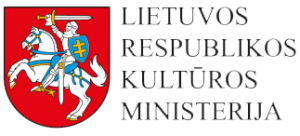#20 POST-ARCHITECTURE
POST – architecture in Lithuania
Why the talk is inspiring?
In the 1970-80s, significant processes transforming creative and art expression were under way in Lithuanian architecture. In the late 1980s, architects A. Černiauskas, V. Kuliešius and A. Trimonis designed the memorable and exceptional objects in Šiauliai, Kaunas and Vilnius. Their aesthetic expression stood out from architecture prevailing at the time. Recalling the experiences of architects, who worked in different cities, we will try to understand what was really important in architecture, how the socio-cultural situation has influenced architects and their later creative work.
Moderated by Tomas Grunskis and Martynas Mankus.
2017
Speaker
Algimantas Černiauskas, Vaidotas Kuliešius, Alfredas Trimonis
How the speaker is exceptional?
Algimantas Černiauskas is an architect and urban planner; he is also a former chief architect of Šiauliai. Together with R. Jurėla, A. Vyšniūnas and sculptor S. Kuzma in 1981-86 he designed the Sundial square in Šiauliai, which became a new symbol of the city.
Vaidotas Kuliešius has designed many public buildings and published articles on architecture theory and criticism. His residential building in Kaunas (1985-89) in 1986 was selected for the all-union public exhibition in Moscow.
Alfredas Trimonis started his career in the 1980s, when he co-designed and built two memorable buildings in Vilnius Old town. For almost twenty years, he lives and works in Hamburg; within this time, he has built several significant buildings at home, in Lithuania.
RECOMMENDS TO READ
THE LANGUAGE OF POST – MODERN ARCHITECTURE
Charles Jencks
Why the book is worth reading?
Influential book by the renowned architecture critic with multiple editions; it is also called a manifesto of post-modern architecture. It has circulated as a poor quality copy inside architectural community; there were a few informal attempts of translating it into Lithuanian. It should be noted that back in Soviet times it was translated into Russian and published instantly (1985). At the time when publications on architectural theory and critics were scarce, the book had become widely known, read and influenced the entire generation of architects.
Recommended by Vaidotas Kuliešius



